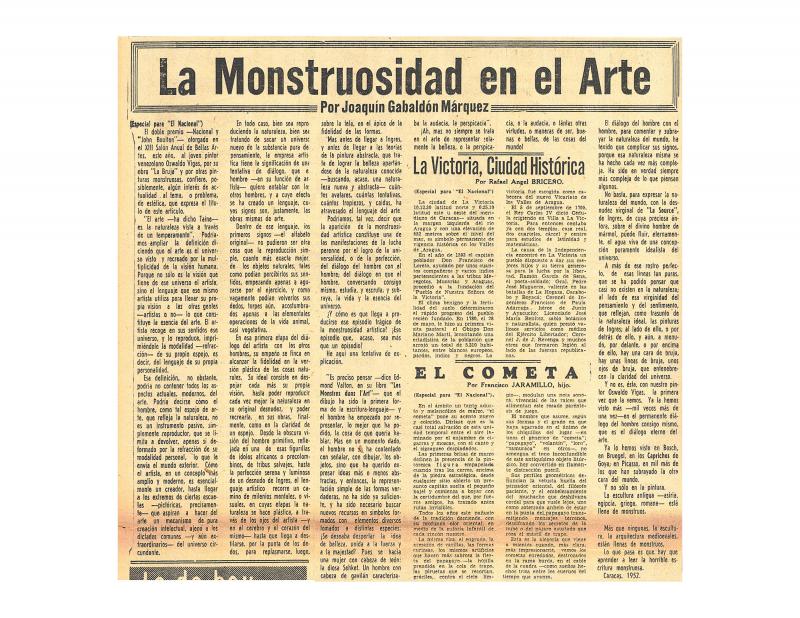This interview of the Venezuelan architect Carlos Celis Cepero was done by A. Feltra. The context was the controversy stirred up in the national art media by statements made by the Venezuelan painter Oswaldo Vigas (b. 1926). As a scathing critic of international trends, such as geometric abstraction and Kinetic art, Vigas questioned the contributions to both art and urban planning by Los Disidentes, including projects such as Ciudad Universitaria de Caracas. The interview presents Celis Cepero’s explanation of the Taller de Arquitectura del Banco Obrero. TABO was an experimental laboratory that facilitated a convergence of the new approaches to urban planning and housing as well as the aesthetic plans of the abstract artists recently arrived from Paris. The text makes it clear that the laboratory was a highly successful experiment. In this regard, the interview reviews the TABO experience as unquestionable evidence that the originators of geometric abstraction participated in socially-oriented projects. Such projects were designed to promote urban renewal and improve the quality of life; they had a vision of habitat as an integration of art and space. In some way, Celis Cepero’s statement pinpointed Vigas’s main concern; that is, the weak or total lack of connection with the problems of contemporary man in abstract art. As a result, Vigas saw this trend as serving no social purpose at all beyond its “decorative” dimension. The dispute was interesting, bringing into the public debate the paradoxes underlying any retrospective view of modern art in Venezuela. For example, alongside the ideals of progress and renewal, there was a search for a Venezuelan identity rooted in national values and in the past.
[Regarding the work of Oswaldo Vigas, see also the text in the ICAA digital archive by Juan Liscano, “La reiteración de Vigas” (doc. no. 1152769); the text by Roberto Guevara, “Vigas: Proceso abierto” (doc. no. 1152753); the article by Marta Traba in “Oswaldo Vigas/Pinturas 1943–1973” (doc. no. 1106962); two essays by Roberto Montero Castro, “Vigas en el ojo ajeno-Plástica e identidad latinoamericana” (doc. no. 1153266) and “Oswaldo Vigas: La lucha por descubrir la identidad americana” (doc. no. 1168108); the text by Joaquin Gabaldón, “La monstruosidad en el arte” (doc. no. 850831); and the article by Lenelina Delgado, “De la pintura al tapiz” (doc. no. 1153365)].







